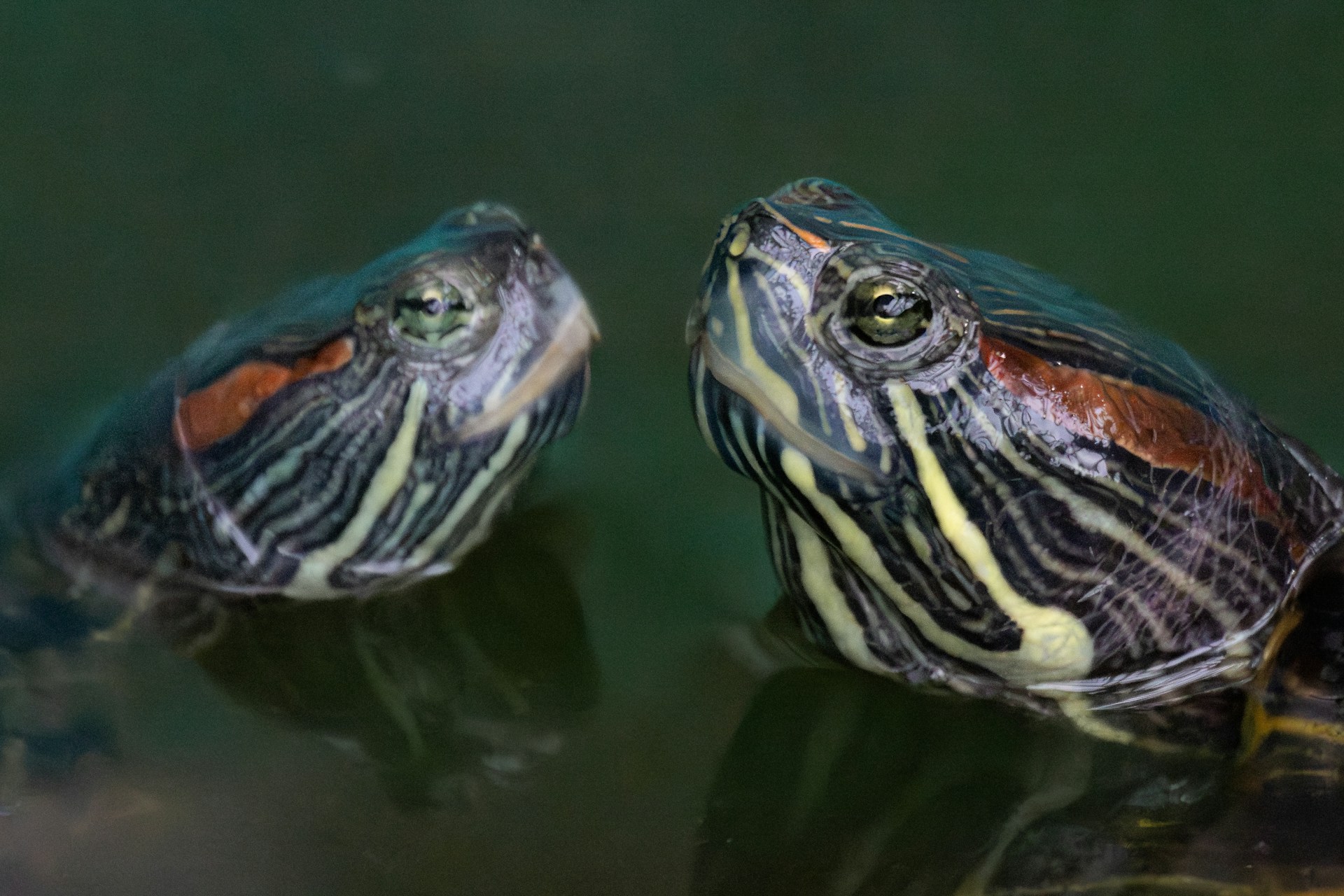Creating a naturalistic environment for your pet reptile does more than just make their enclosure aesthetically pleasing—it dramatically improves their quality of life. Unlike traditional bare-bones setups with just the basics, a naturalistic habitat mimics your reptile’s native ecosystem, encouraging natural behaviors like climbing, burrowing, hunting, and basking. The effort you put into creating these environments pays dividends in your pet’s physical health, mental stimulation, and overall well-being. This comprehensive guide will walk you through everything you need to know about transforming your reptile’s enclosure into a slice of their natural habitat, ensuring they thrive rather than just survive in captivity.
Understanding Your Reptile’s Natural Habitat

Before purchasing a single piece of décor or substrate, research is essential to understanding what environment your specific reptile species evolved to inhabit. Desert dwellers like bearded dragons require dramatically different setups than tropical species like crested geckos or aquatic turtles. Study your pet’s geographic origin, the typical landscape features of their native range, and the climate conditions they’ve adapted to over millennia. Pay particular attention to humidity levels, temperature gradients, lighting conditions, and whether they naturally spend time in trees, burrows, rocks, or water features. This foundational knowledge ensures that every element you add to their enclosure serves a biological purpose rather than just looking attractive to human eyes.
Selecting the Right Enclosure Size and Type

The foundation of any naturalistic setup begins with selecting an appropriately sized and configured enclosure that accommodates your reptile’s adult size and natural behaviors. For arboreal species like chameleons and certain geckos, tall enclosures with ample climbing space take precedence over floor space. Conversely, terrestrial species like tortoises and blue-tongued skinks require expansive floor space for roaming and exploring. As a general rule, provide an enclosure that allows your reptile to move freely in all three dimensions, with length at least twice the adult animal’s size and height appropriate for climbing species. Glass terrariums, PVC enclosures, and custom-built wooden vivariums all have their place depending on your specific reptile’s needs for heat retention, humidity control, and ventilation.
Creating Proper Temperature Gradients
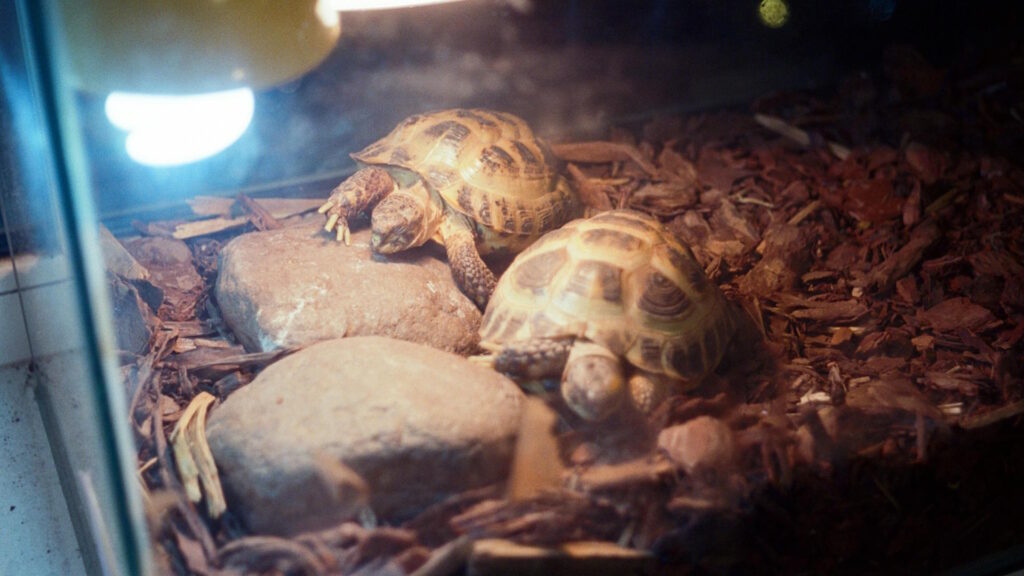
Temperature gradients are crucial elements of naturalistic enclosures, allowing reptiles to thermoregulate by moving between warmer and cooler areas as needed. Unlike mammals, reptiles cannot generate their own body heat and instead rely on environmental temperatures to regulate bodily functions. Create a thermal gradient by placing heat sources on one side of the enclosure, allowing temperatures to gradually cool toward the opposite end. This setup mimics natural conditions where sunlight creates warmer basking spots while shade offers cooling refuge. Depending on your species, you’ll need to research the specific basking temperature, ambient temperature, and nighttime temperature drops required for optimal health. Utilize a combination of heat lamps, ceramic heat emitters, under-tank heaters, and thermostats to maintain these precise conditions year-round.
Lighting Systems That Mimic Natural Sunlight
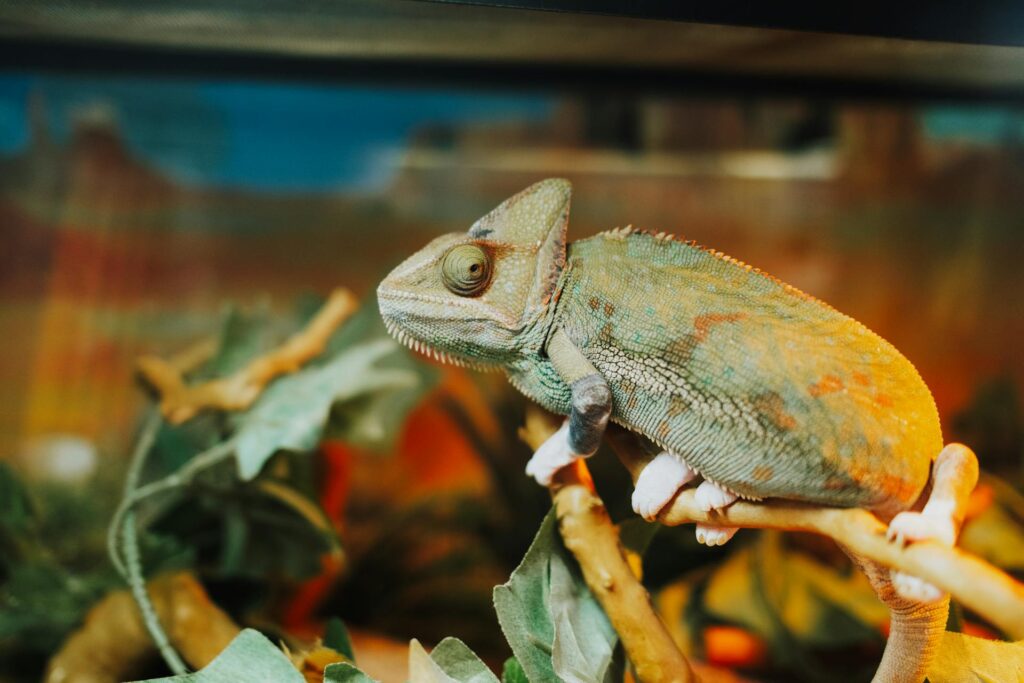
Proper lighting does far more than just illuminate your reptile’s enclosure—it drives critical biological processes including vitamin D3 synthesis, circadian rhythm regulation, and seasonal behavioral changes. Full-spectrum UVB lighting is essential for most reptiles, allowing them to process calcium properly and prevent metabolic bone disease. The intensity and duration of UVB needed varies significantly by species, with desert dwellers typically requiring higher output bulbs than forest-dwelling species. Beyond UVB, consider incorporating UVA lighting to encourage natural behaviors and appetite, as well as LED day/night cycles to simulate dawn and dusk transitions. Position lights to create naturalistic dappled effects, simulating how sunlight would filter through canopy in the wild or create distinct basking spots in open habitats.
Choosing Appropriate Substrate Materials

Substrate is more than just the bottom layer of your reptile’s enclosure—it’s a functional element that impacts humidity, burrowing opportunities, waste management, and joint health. Naturalistic substrate choices should reflect what your reptile would encounter in the wild: arid species might thrive on sand-soil mixtures or crushed walnut shells, while tropical species benefit from coconut fiber, cypress mulch, or bioactive soil mixtures. Depth matters as much as material—many reptiles engage in natural digging behaviors and require several inches of substrate to satisfy this instinct. For species prone to impaction, larger particle substrates or bioactive setups that allow natural foraging without accidental ingestion risks are ideal. Consider layering different substrates to create drainage layers for tropical setups or moisture gradients that allow your pet to self-regulate their hydration needs.
Incorporating Functional Hardscape Elements
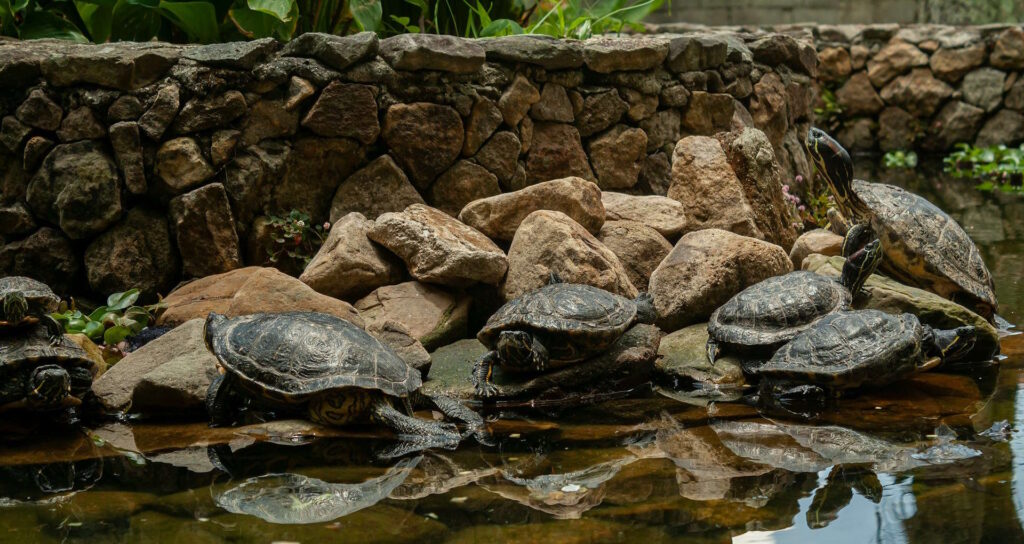
Hardscape elements like rocks, branches, cork bark, and stone ledges serve multiple purposes in a naturalistic reptile habitat. These features create vertical space, provide basking platforms at various heights, offer security through hide spots, and create microclimates within the enclosure. When selecting hardscape, prioritize items that serve your reptile’s specific behavioral needs—rough-textured climbing surfaces for species that need to wear down claws, flat basking stones that retain heat for thermal regulation, or stacked rock formations that create security crevices. Secure all hardscape elements firmly to prevent collapse, which could potentially injure your pet. Natural materials are preferred over artificial ones, but ensure any collected items from outdoors are properly sanitized through baking, soaking in diluted bleach solutions, or other appropriate disinfection methods before introduction to the enclosure.
Adding Live Plants for Function and Aesthetics
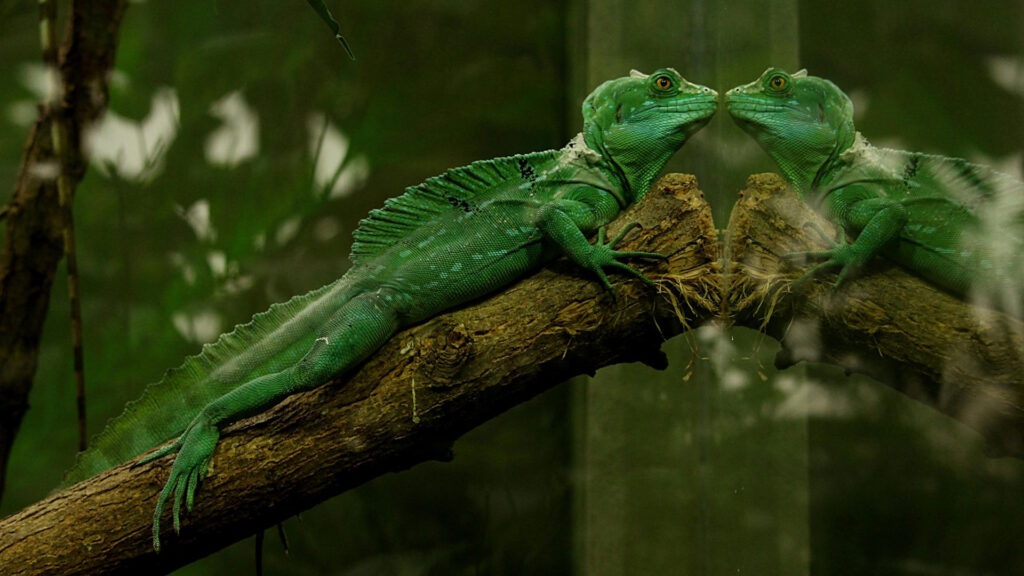
Live plants transform a basic reptile enclosure into a vibrant ecosystem while providing numerous benefits for your pet. Plants naturally regulate humidity, filter air, create privacy, and provide additional climbing or resting surfaces. When selecting plants, focus on species that can tolerate your reptile’s environmental parameters and won’t pose toxicity risks if ingested. Succulents like aloe, haworthia, and certain echeveria varieties work well in desert setups, while pothos, spider plants, bromeliads, and snake plants thrive in tropical enclosures. Secure plants in pots hidden beneath substrate or plant directly in bioactive setups where they can establish root systems. For reptiles that may damage plants, consider starting with inexpensive, fast-growing species or using plant guards until your animal becomes accustomed to their presence.
Designing a Bioactive System

Bioactive enclosures represent the pinnacle of naturalistic reptile habitats, creating self-sustaining miniature ecosystems that require minimal maintenance while maximizing naturalness. These systems incorporate a custodian crew of isopods, springtails, and beneficial soil microbes that break down waste and prevent mold growth. Creating a bioactive setup requires careful layering—start with a drainage layer of expanded clay pellets or similar material, add a separation mesh, then build a substantial substrate layer with bioactive soil mix. Introduce cleanup crew species appropriate for your enclosure’s humidity level and temperature, allowing them to establish before adding your reptile. The resulting system processes waste naturally, neutralizes odors, maintains healthy plant growth, and dramatically reduces the need for complete substrate changes, often lasting years with minimal intervention beyond occasional supplementation of the cleanup crew population.
Providing Natural Water Sources

Water features in naturalistic enclosures should mimic how your reptile would encounter hydration in the wild rather than simply placing a water dish in the corner. Desert species might benefit from shallow, rock-formed water dishes that blend with the landscape or misting systems that create morning dew for licking. Tropical species often appreciate larger water features for soaking or even swimming, while species from seasonal environments might need alternating dry and wet cycles. Consider how water interacts with the entire habitat—some reptiles primarily drink water droplets from leaves rather than standing water, making misting systems essential. For larger water features, filtration systems prevent bacterial buildup, while placement should consider the humidity gradient of the enclosure, with water features contributing moisture to areas where higher humidity is desired.
Maintaining Proper Humidity Levels

Humidity control represents one of the most challenging yet critical aspects of reptile husbandry, with naturalistic setups offering multiple tools for achieving species-appropriate levels. Tropical species often require humidity levels between 60-90%, while desert dwellers may thrive in drier conditions of 20-40%, with many species needing humidity gradients or fluctuations between day and night. Substrate choice significantly impacts ambient humidity, with coconut fiber, sphagnum moss, and cypress mulch increasing moisture retention. Strategic misting, either manually or through automated systems, helps create natural humidity cycles that stimulate behaviors like shedding and breeding. Humidity refuges—areas of higher localized moisture created through enclosed spaces with damp substrate—allow reptiles to self-regulate their exposure to humidity while maintaining a healthier overall enclosure environment with proper ventilation to prevent stagnant air and mold growth.
Creating Microhabitats Within the Enclosure
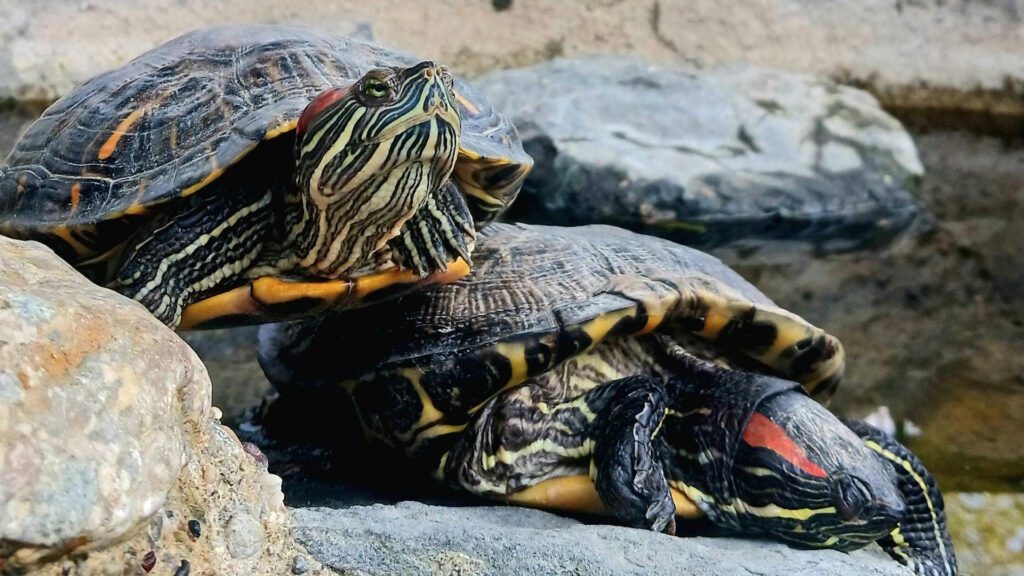
The most successful naturalistic reptile habitats contain multiple microhabitats within a single enclosure, allowing your pet to move between different conditions as needed throughout the day. These varied zones might include a hot, dry basking area with direct light; a cooler, shadier retreat zone; a humid hide spot for shedding assistance; and perhaps a moderately lit area with intermediate temperature. By creating these distinct zones, you enable natural thermoregulation and behavior patterns rather than forcing your reptile to endure uniform conditions. Strategic placement of plants, hardscape, substrate depth variations, and light positioning all contribute to creating these distinct microhabitats within the larger enclosure. Monitor your reptile’s preferences and behaviors to determine if they’re utilizing all areas as intended, making adjustments as needed to ensure they can fully express their natural behavioral repertoire.
Monitoring and Maintaining Your Naturalistic Setup
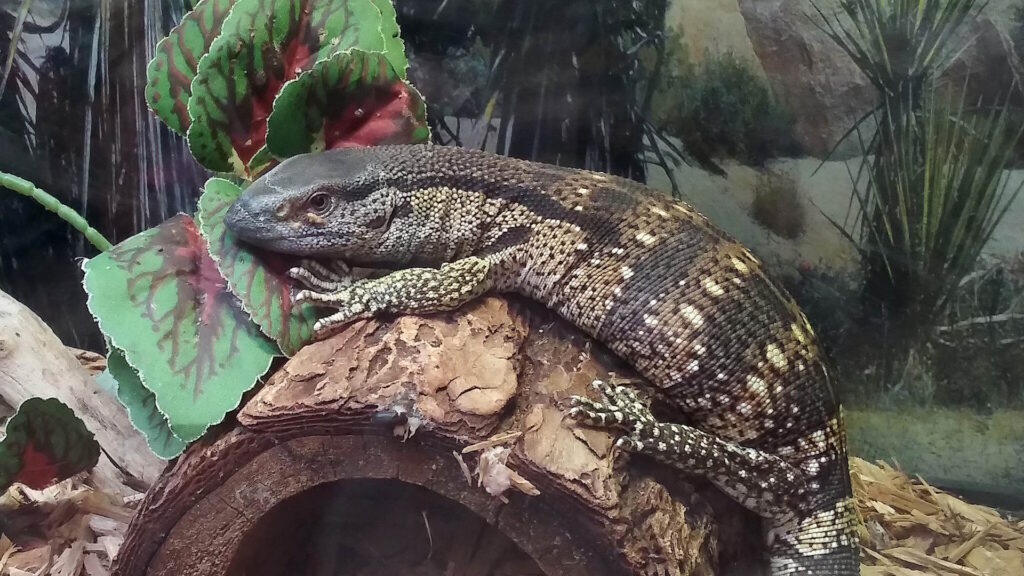
While naturalistic habitats often require less frequent complete overhauls than sterile setups, they do need consistent monitoring and targeted maintenance to remain healthy environments. Invest in reliable digital hygrometers and thermometers for multiple zones in your enclosure, checking readings daily to ensure conditions remain appropriate. Establish a regular maintenance schedule that includes spot-cleaning waste, pruning plants, replenishing bioactive populations if applicable, and checking for any mold growth or pest introductions. Water features require particular attention to prevent bacterial buildup, with partial water changes and filter maintenance as needed. Seasonal adjustments may be necessary to accommodate breeding seasons, brumation periods, or natural light cycle changes that would occur in your reptile’s native range, helping synchronize their biological rhythms with natural cues despite living in captivity.
Evaluating Your Reptile’s Response to Their Environment

The ultimate measure of a successful naturalistic habitat is your reptile’s behavioral and physical response to their environment. A well-designed habitat should encourage a full range of natural behaviors—active exploration, proper feeding responses, natural basking cycles, use of various microclimates, and signs of comfort like proper shedding and normal defecation patterns. Watch for increased activity levels, exploration of different enclosure areas, and decreased stress behaviors like excessive hiding or glass surfing. Physical indicators of a successful habitat include proper growth rates, good muscle tone from climbing or digging, healthy skin and shed cycles, and vibrant coloration. If your reptile consistently avoids certain areas of the enclosure or shows signs of stress, reassess those elements and make adjustments based on their preferences rather than aesthetic considerations or generic care sheets.
Conclsuion
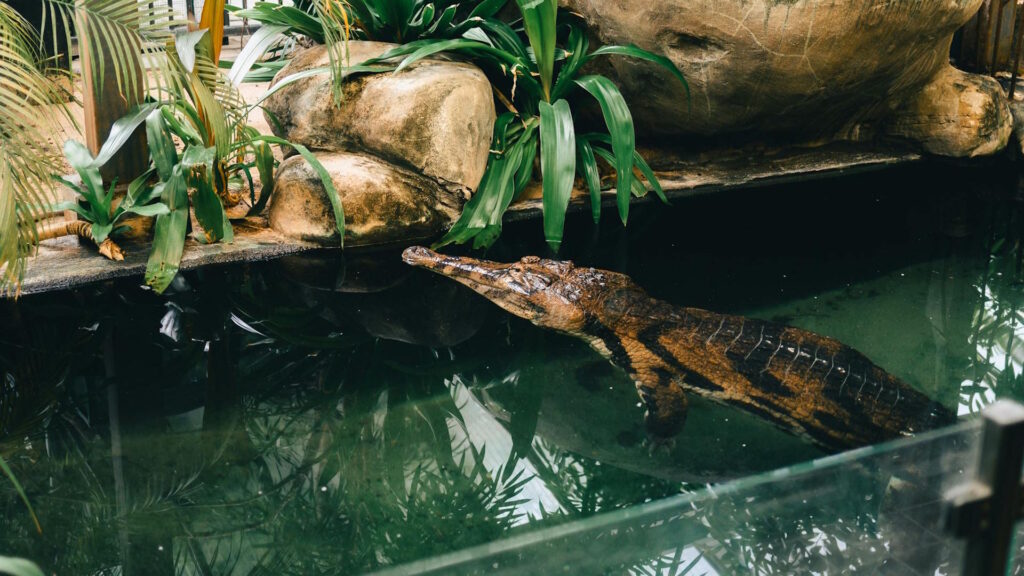
Creating a naturalistic environment for your reptile requires initial research, thoughtful design, and ongoing adjustments, but the rewards are substantial. Not only will you enjoy observing more natural behaviors, but your reptile will experience tremendous benefits in physical health, mental stimulation, and overall quality of life. By recreating elements of their native ecosystem, you’re acknowledging and respecting millions of years of evolutionary adaptation while providing the best possible care under captive conditions. The vivarium you create becomes not just a home for your reptile, but a living slice of their natural world—a daily reminder of the habitats we hope to preserve in the wild while providing optimal conditions for the animals under our care.


